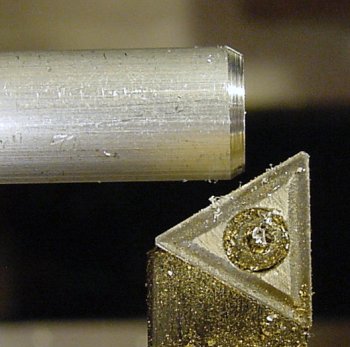
phillyj
New Reader
6/29/08 12:41 p.m.
The last SCC mag I read, issue from last year, talked to a Japanese tuner who chamfered his cars. Basically he drilled holes in the chasis so the it cannot bend along a single axis. I searched on the web to find more about this but no luck. He seems to be an expert builder of many race vehicles, some famous (I think he built a Falken drift car and many Skylines and Spoon Hondas)
The advantage to this is weight reduction and improved strength on the chassis. Anyone have any experience with this technique?
Edit: Here is the article
http://www.sportcompactcarweb.com/features/0611sscp_opera_performance_honda_s2000/index.html
Well, he's not doing exactly that from what I can tell. He is cutting out pieces of the car that don't do their job extremely well and replacing them with new metal. That new metal has holes drilled in it to reduce weight. When combined with what is left of the old parts, the new pieces make the car stronger - and the whole process ends up weighing a bit less.
I'm no vocab expert, but I thought "chamfered" means radiusing the edges or "corners" of circles to remove stress points?
Anyways, I think I know what you are talking about, I ran across it in an old miller welding book.


Sorry about the fuzzy second picture, but basically: reducing area in a neutral axis (holes) decreases deflection under inertial forces.
If you view the pictures from the original source it should be big enough to read. I browsed through the SCC article and they refer to "chamfering" the circle drilled holes.
That means they rounded the edges (can see in pics, makes the holes look like they were stamped out) this adds another dimension to the metal adding rigidity. So two different things at work to improve stiffness.
Probably flaring the holes for strength.
Using what are called Dimple Dies.
Yeah those things aren't cheap  http://vansantent.com/sheet_metal_machines/dimple_dies.htm
http://vansantent.com/sheet_metal_machines/dimple_dies.htm
He's not adding any strength by drilling holes. He's removing weight from where it isn't needed by swiss cheesing the snot out of everything. The weight removal allows him to justify additional bracing, making the chassis stiffer while still keeping it light.
^^ That's a far cry from the Roller Derby of my childhood. 
What he's doing is (think about it) increasing the strength to weight ratio. If he cuts a hole and removes weight without compromising strength, he's improved the strength to weight ratio.
Chamfering (rounding or radiusing an edge) by itself doesn't add any strength, except in the case of the sheet metal hole dimple die thing described earlier. It can reduce stress risers, or places where a crack is likely to start.
ignorant wrote:
ProDarwin wrote:
He's not adding any strength by drilling holes.

Those are Dimple DYKES not Dies.
Wow nice  That guy decreased the weight of the car from nearly 3000lbs to under 2200lbs, while increasing stiffness immensely...
That guy decreased the weight of the car from nearly 3000lbs to under 2200lbs, while increasing stiffness immensely...

Per Schroeder
Technical Editor/Advertising Director
6/30/08 9:06 a.m.
The cage gussets on the Saab were also drilled/dimpled. The old site had pictures of the process.
I think the guy didn't mean chamfered, but something was either lost in translation or he flat doesn't know what he's talking about.
The author uses the phrase "circle drilled and chamfered."
WTF is "Circle Drilled?"
Now if it were square drilled and ...
nevermind
daytonaer wrote:
I'm no vocab expert, but I thought "chamfered" means radiusing the edges or "corners" of circles to remove stress points?
Just for the sake of completeness....
If I am not mistaken Chamfering isn't quite giving the edge a radius, though its close. Putting a radius on the edge is a fillet, chamfer is about the same thing but a straight cut....
So a fillet would be a rounded edge, a chamfer would simply be cutting out the lip at an angle usually to guide something into the hole.
 so the inner corner here is a fillet of radius R
so the inner corner here is a fillet of radius R
 While this picture shows a block that has been chamfered.
While this picture shows a block that has been chamfered.
Fillets are to remove stress points, I think chamfers are more for ease of assembly....
Fillet and chamfer can be used to describe very similar stampings or machining. For instance, a rod can be chamfered on the outside and a hole on the inside, that's also called radiusing a hole. A fillet can be used either inside or outside of a shape.
Chamfer. This one is flat, they can also be rounded.

Fillet, on the right.

In some cases, even a small fillet can dramatically strengthen a part. I used to sell forklift parts for Sundstrand hydrostatic transmissions and they used to break input shafts right at a square machined step. The fix was to machine the shaft with an approximately 1/8" diameter fillet; no more breaking.
If you look at the pix of Per's cage braces and this guy's dimpled holes and then compare them to the fillet pic, you can see how the dimpled holes will strengthen a panel.
confuZion3 wrote:
RedS13Coupe wrote:
daytonaer wrote:
While this picture shows a block that has been chamfered.
No it doesn't.  Does anyone else just see a big German / English sign there instead?
Does anyone else just see a big German / English sign there instead?
Oops... guess thats what i get for hotlinking :( both my pictures failed...
I meant well, promise 
Well Jensen picked up my slack...just look at his pictures.
Sorry bout that.
























 so the inner corner here is a fillet of radius R
so the inner corner here is a fillet of radius R While this picture shows a block that has been chamfered.
While this picture shows a block that has been chamfered. 



















